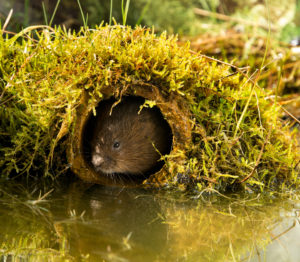National Water Vole Monitoring Programme enters its third year
Emily Thomas, Key Species Monitoring and Data Officer at PTES, outlines the success of last year’s water vole monitoring programme and explains how you can get involved in 2017.

While 2016 may be remembered as rather tumultuous, our National Water Vole Monitoring Programme had a very successful year. In just its second year, our brilliant volunteers collected data from 404 water vole sites, which is a fantastic achievement. And we’re aiming to survey even more sites in 2017.
We had wanted to build on the success of the first year of the NWVMP by increasing both the number and distribution of sites being surveyed in 2016, to allow us to get a really good idea about how water voles are doing across the country. We couldn’t do this without the hard work and dedication of our volunteers, so a big thank you to everyone who took part!
Data from 162 sites were submitted online, and we also received records from an additional 242 sites surveyed as part of two University of Aberdeen projects in Scotland. Of the 162 online sites, 103 were sites surveyed during the VWT national surveys and 59 were sites that had been newly registered with the programme over the last two years.
Of the 404 sites, 185 had water vole field signs present (46%). Fifteen of the initial national survey sites were positive, while 170 of the additional sites had signs present. The distribution of positive sites was skewed towards Scotland, partly due to the large number of sites surveyed there but encouragingly there were occupied sites across the UK from Cornwall up to the Highlands.
2017
This year we will again be aiming to increase the number of sites surveyed, especially the number of pre-selected sites that are available to choose online because we have historical data from these sites and can immediately see any changes that have occurred over the last 20 years.
If you, or anyone else you know, would be interested in surveying a site please visit the survey webpages www.ptes.org/watervoles and sign up to take part to see the map of available sites.
Surveys will again be taking place during May to try and minimise any variation in the data collected from all the sites.
